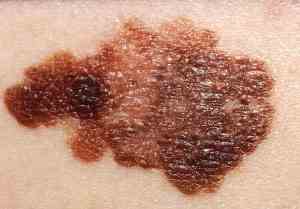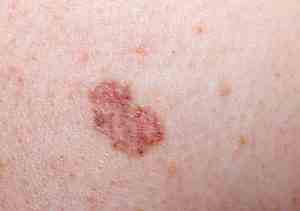Melanoma, carcinoma, skin tumor…. The term “skin cancer” is just an umbrella term for the many different forms of skin cancer.
Increasing Numbers
Every third cancer diagnosis now affects the skin, making skin cancer one of the most common cancers in Germany with more than 200,000 new cases per year. However, people who die from skin cancer account for only one percent of all cancer-related deaths. Skin cancer can therefore be successfully treated in most cases. – as long as it is recognized in time.
Nevertheless, it is worrying that the number of skin cancer sufferers continues to rise: In Germany, for example, according to the Robert Koch Institute, the number of diagnoses of black skin cancer increased fivefold between 1970 and 2015. Most new cases are among older people aged 75 to 79, because the damage caused by too much sun, for example, often only becomes apparent years later.
But women between the ages of 45 and 54 are also more likely to develop skin cancer. It is assumed that the beauty ideal of tanned skin plays a role here, since the UV light in the sun or in solariums is one of the main risk factors for skin cancer.
Light skin cancer
If you look at 100,000 people, about 328 of them will be diagnosed with skin cancer each year. About 290 of these patients, i.e. about 90 percent, will be diagnosed with what is known as “white skin cancer”. This develops in the upper layers of the skin and often appears as a patch or lump that can become reddish in color and also bleed. White skin cancer often develops in areas that are particularly exposed to the sun, such as the head and neck area.
The two most common forms of white skin cancer are basal cell carcinoma and squamous cell carcinoma. It is characteristic of both types of cancer that the tumors grow slowly and are therefore discovered before they spread to the surrounding tissue – the chances of recovery are therefore usually very good.

Dark Skin Cancer
The remaining ten percent develop black skin cancer, which is also known as malignant melanoma and is difficult to recognize due to its similarity to a dark birthmark or a mole. The tumor forms from the pigment-forming melanocytes, which are located in the epidermis, i.e. in the upper layer of skin. In contrast to white skin cancer, malignant melanoma often forms metastases even when it is small and thus has the highest degree of malignancy of all skin tumors.
In the course of metastasis Individual tumor cells detach from the primary tumor and spread throughout the body via the lymphatic system or the bloodstream. This “spread” into surrounding tissue or even more distant areas becomes particularly dangerous when tumor cells settle in vital organs such as the liver and brain and continue to grow there. Due to improved skin cancer screening, however, melanomas are now usually detected at an early stage, so that the chance of recovery is usually good despite the high level of malignancy.
Benign or Malignant?
Even if white skin cancer is more harmless than malignant melanoma, all the types of skin cancer mentioned so far are still malignant tumors that have the ability to grow quickly and form metastases. Benign skin tumors, on the other hand, are localized and are caused by increased growth of a specific tissue. However, since they do not spread to neighboring organs, this type of tumor is usually harmless.

